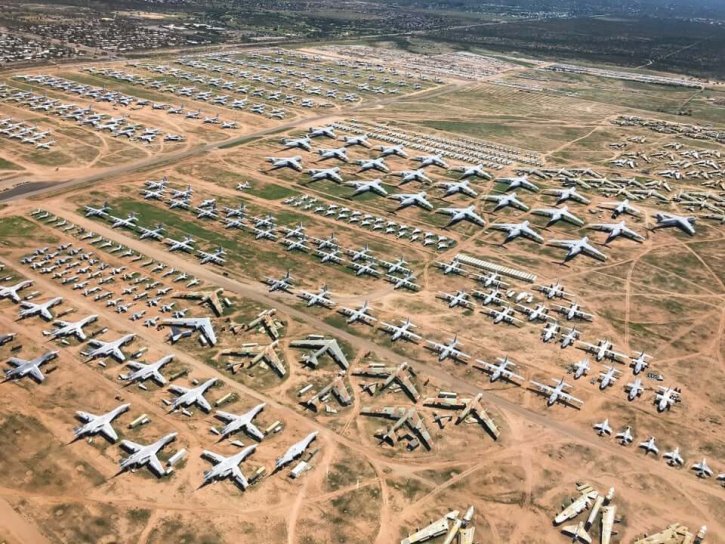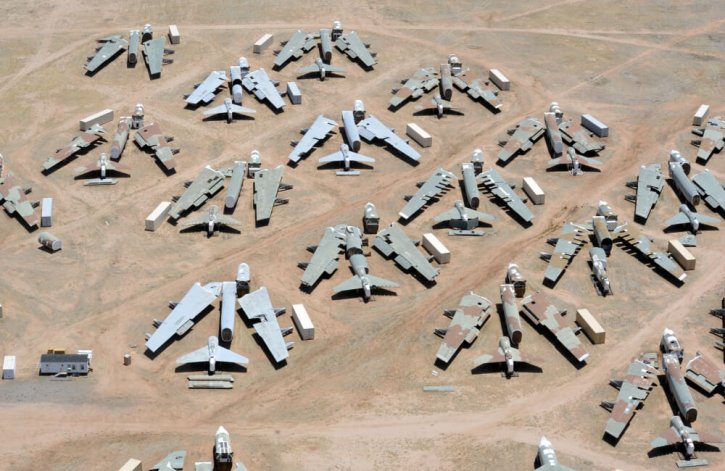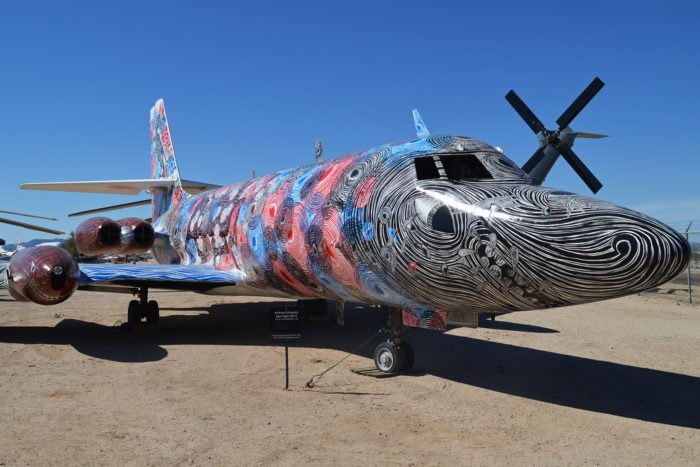Arizona
Tucson
Visit the Largest Airplane Graveyard right here in Tucson, Arizona for an Amazing Experience
Please note: Visiting”The Graveyard” is now closed to the public unfortunately per the Pima Air & Space Museum’s website. The Pima Air & Space Museum is open however, and is totally worth the visit!
The evolution of travel has truly reached a different height, both literally and figuratively, with the discovery and success of the airplane. The airplane is an incredible feat of engineering that has forever changed the way people go from one place to another. As for the impact of Aircraft in the world – it made people’s lives easier, gave a different kind of power to countries during the war, aided search and recovery missions, and made transporting goods faster.
Since we all know that nothing lasts forever and even these enormous machines have an expiration, do you ever think about where airplanes go when they die?
Where Airplanes Go When They Die

There’s a chance that they’re in the Davis-Monthan Air Force Airplane Boneyard in Tucson, Arizona. This is the largest airplane boneyard in the world!
It is the ideal storage facility given the place’s low humidity (10% to 20% range), high altitude and hard alkaline soil. The geology of the desert is also another factor because it allows Aircraft to be moved around without the need to pave the storage areas.
Some of the airplanes here include:
- B-29 Superfortresses
- C-47 Skytrains
- F-4 Phantom II
- F-16
- F-84F Thunderstreaks
- Convair B-36 Peacemakers
- USAF Boeing B-52 Stratofortresses
- C-141 Starlifters
- B-1B Lancers
- F-111 Aardvarks
- C-141 Starlifter
Unsurprisingly, this place stores airplanes from government agencies, as well as those from the Navy, Marine Corps, Coast Guard, NASA, and the Air Force.
An Aircraft’s Life Cycle

The average life cycle of an aircraft is between 20 and 36 years. Still, it largely depends on the pressurization cycles (takeoff and landing), airlines’ maintenance, fuselage and wings’ condition, as well as damages, among many other factors.
While some planes from lesser-known carriers may take the shortcut to the scrapyard, a lot of jets will still have multiple owners over their life cycle.
How does Davis-Monthan Air Force Airplane Boneyard store the Aircraft?

The inventory in this airplane boneyard is guided by specific categories. Here’s how they categorize them:
Type 1000
These Airplanes for long-term storage since they have a high potential to return to “flying status.” Aircraft of this type are to be maintained until recalled to service. For that reason, no one can remove any part from the aircraft.
Type 2000
These Airplanes still have available parts for reclamation. The parts usually help keep other planes flying.
Type 3000
These are the Airplanes that are due for short-term temporary storage. Transfers to another country or reclassification is a possible scenario for Type 3000 Aircraft.
Type 4000
These Airplanes have already been gutted. In other words, every usable part of the Aircrafts has been reclaimed so they need to be sold, broken down, and recycled.
There’s even cool airplanes with drawings on them!

Are you allowed to visit this Airplane Boneyard in Arizona?
In general, an airplane boneyard is considered a “limited” access site. This means that the place doesn’t usually allow visitors nor tours for the public to avail.
It is a good thing that the Davis-Monthan Air Force Base in Tucson allows tours of its Aerospace Maintenance and Regeneration Group (AMARG) facility. It is under strict access rules, but at least you’ll get a glimpse of the interesting place.
What you should know:
- Since the AMARG is a controlled-access facility, you can only take a bus tour from the nearby Pima Air and Space Museum. The tour is available from Monday to Friday, except during the Federal holidays.
- The tour is able to stop at different locations, but visitors cannot go off the bus.
- Visitors may take photos.
Check out their website for more info: http://www.pimaair.org/tour-boneyard
The next time you plan a trip to Arizona, make sure you squeeze in this place between your outdoor wonder destinations and getaways! After all, it’s not every day you get to see an airplane boneyard.

















